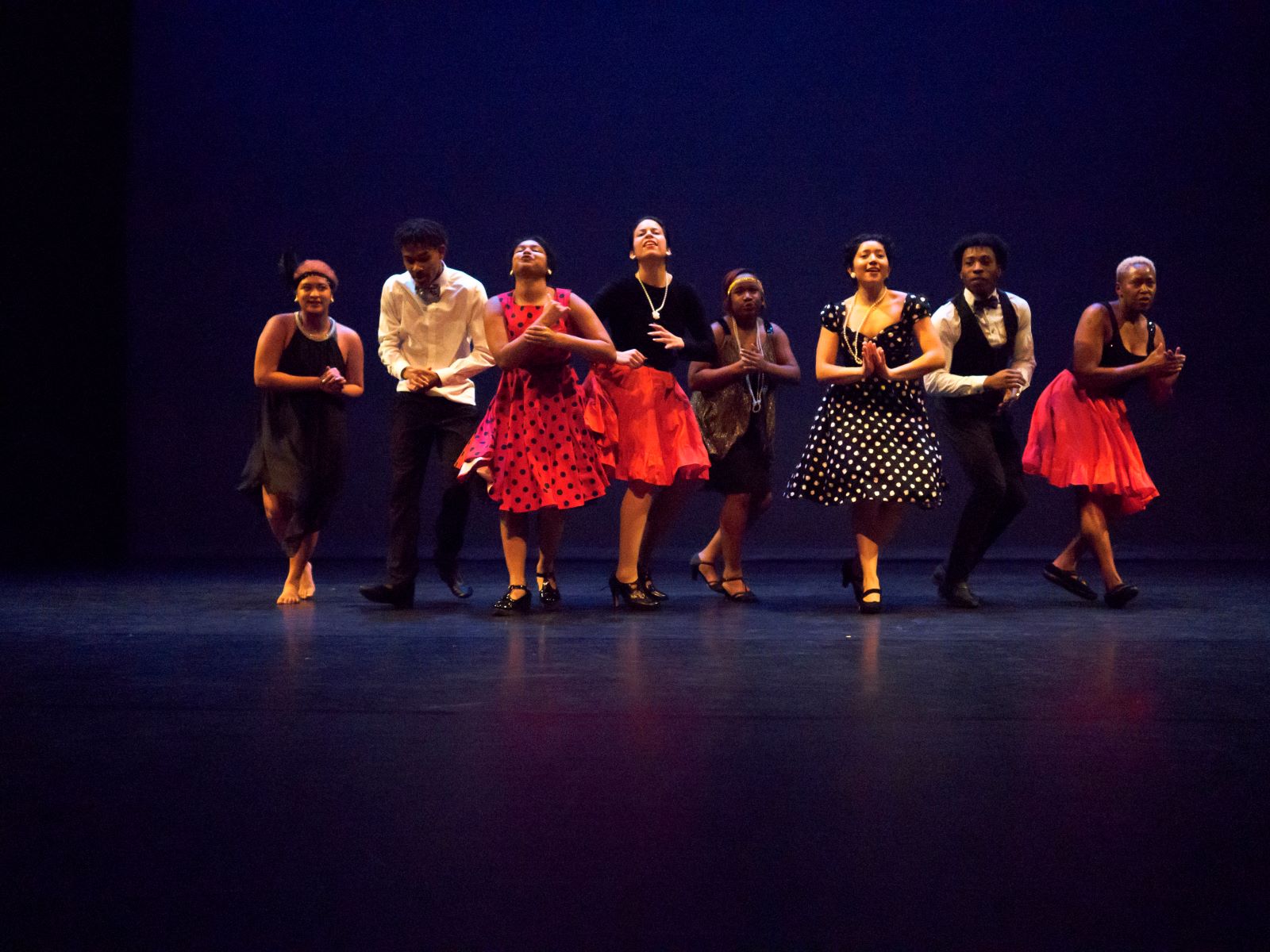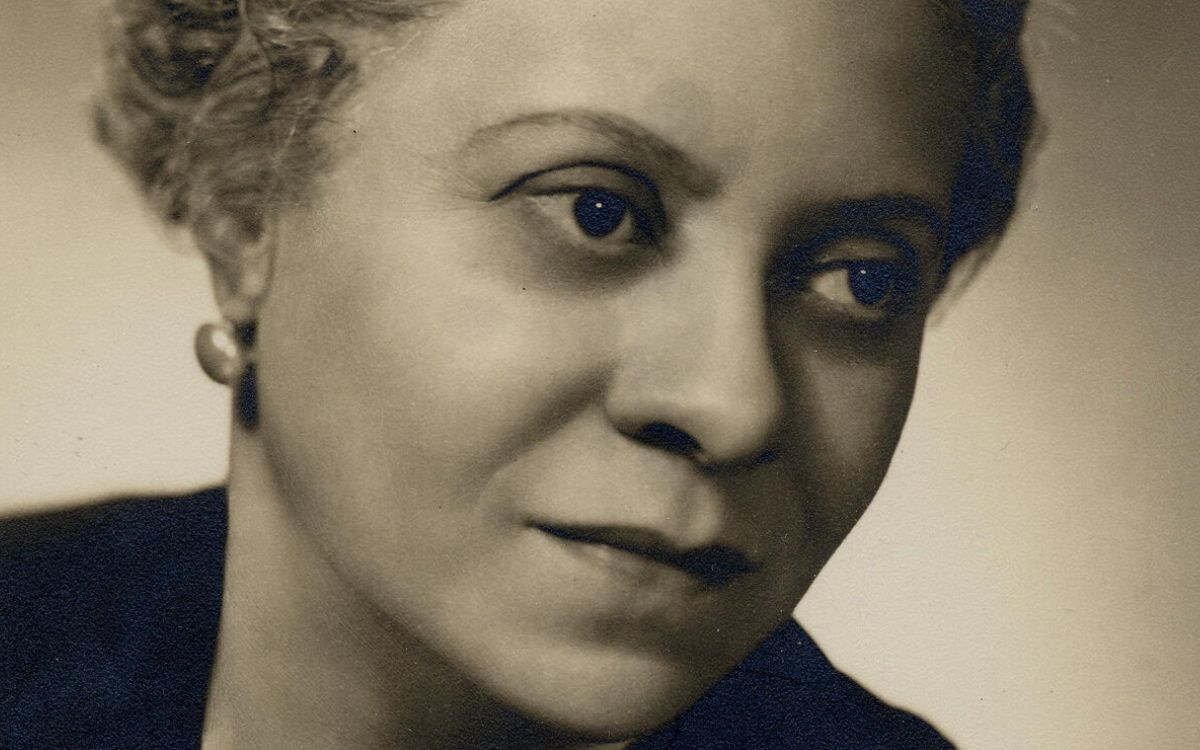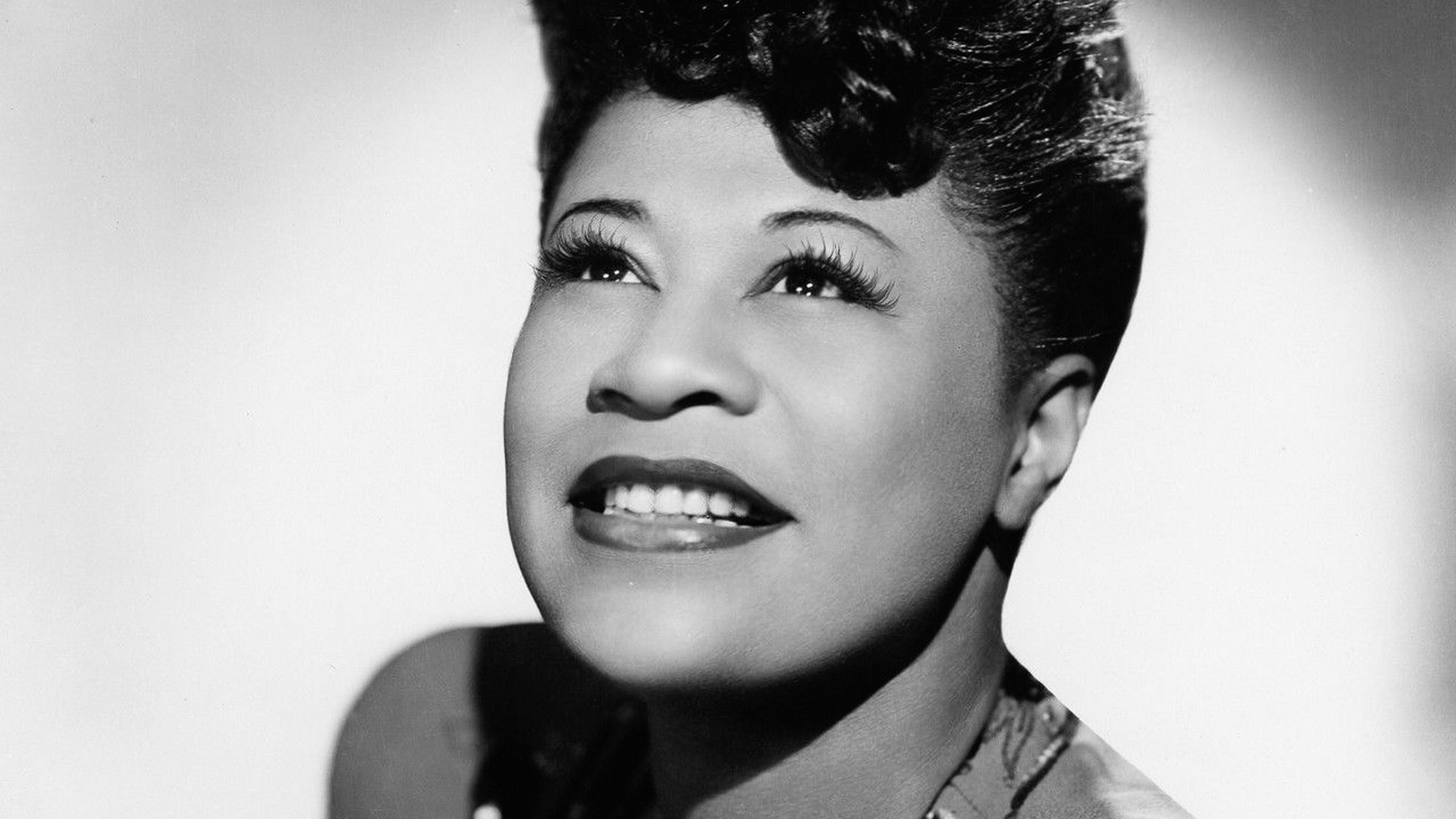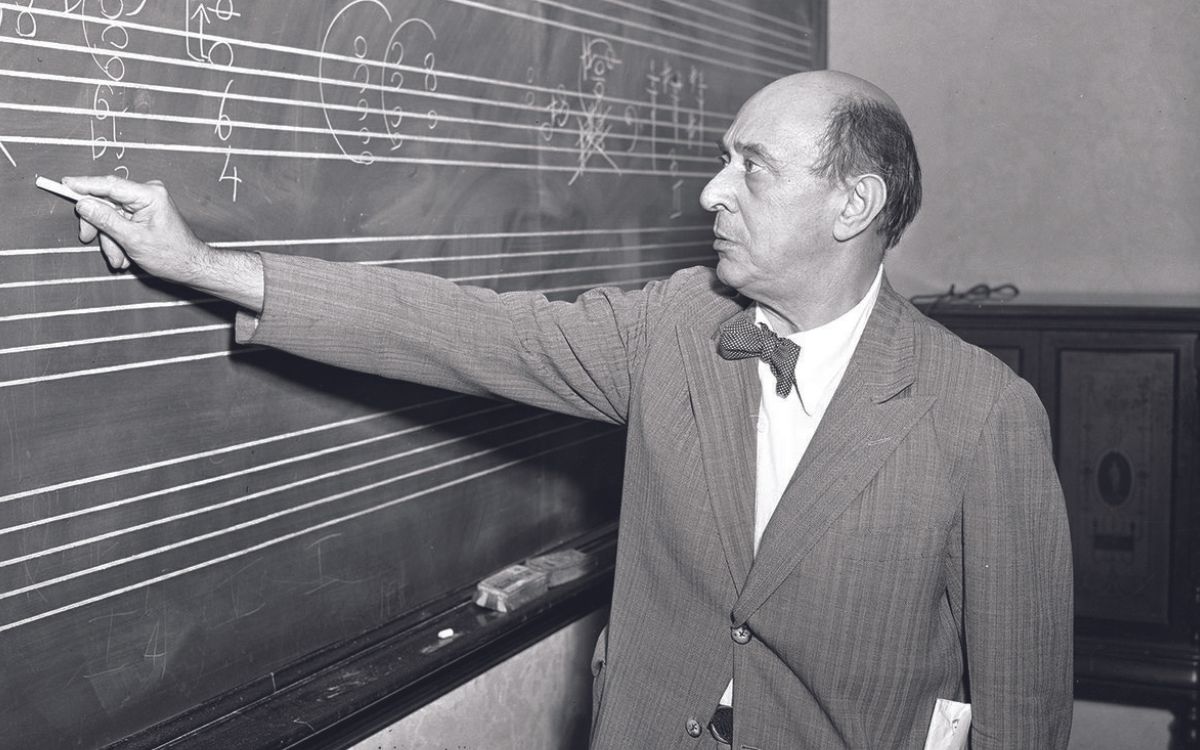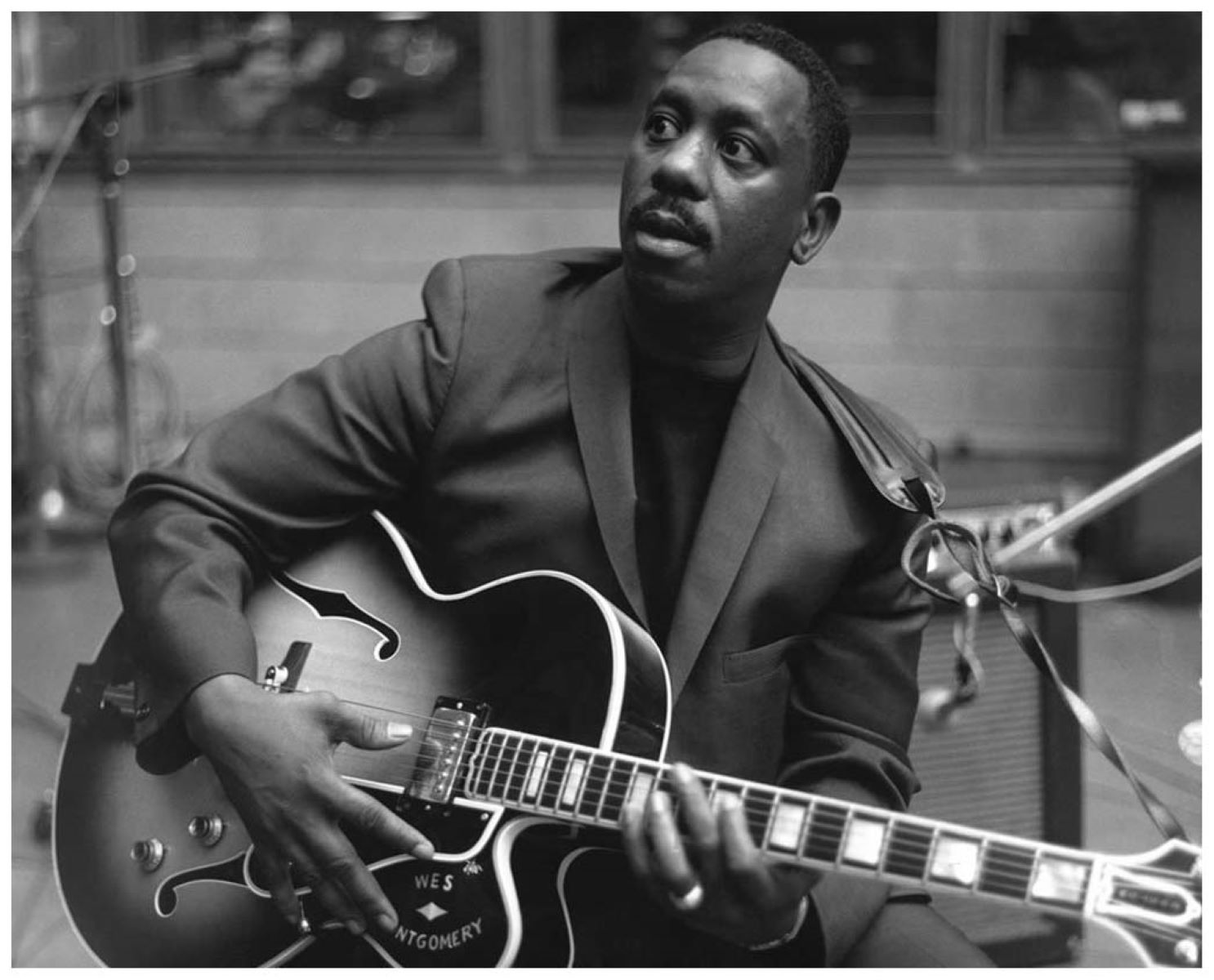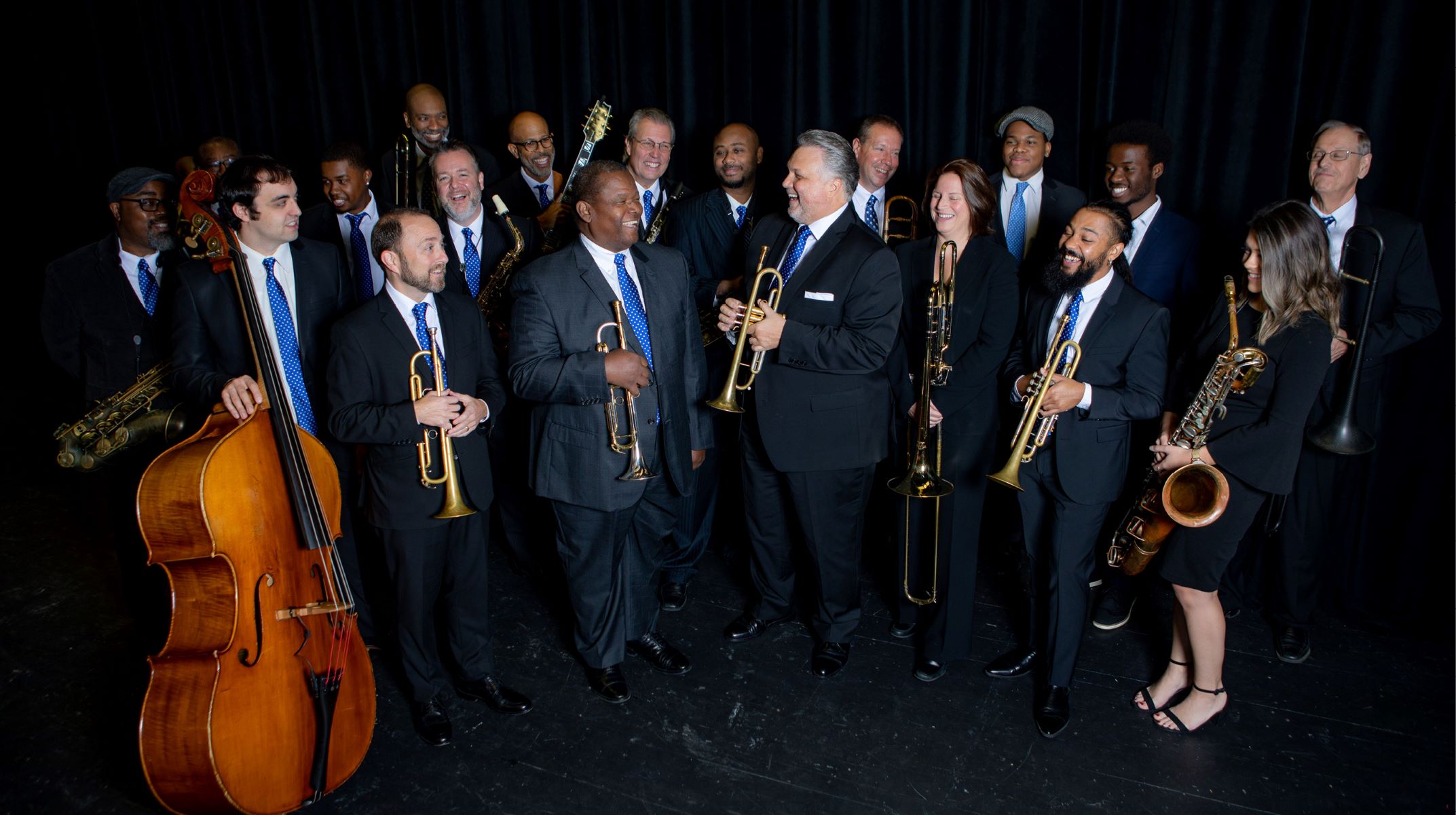

Jazz
Who Created Symphonic Jazz
Modified: February 24, 2024
Discover the genius behind symphonic jazz and explore the origins of this unique musical genre. Uncover the history of jazz and the visionary artists who created it.
(Many of the links in this article redirect to a specific reviewed product. Your purchase of these products through affiliate links helps to generate commission for AudioLover.com, at no extra cost. Learn more)
Table of Contents
Introduction
Jazz, the soulful and improvisational genre of music, has a rich and diverse history that has evolved over the decades. One distinctive subgenre that has emerged from the fusion of jazz and classical music is symphonic jazz. This unique blend combines the spontaneity and improvisation of jazz with the orchestral arrangements and textures of classical music, creating a harmonious marriage of the two genres.
Symphonic jazz showcases the versatility and virtuosity of jazz musicians, as they navigate through complex compositions and arrangements. It allows for a wide range of musical expressions, as it blends the improvisational nature of jazz with the structural intricacies of classical music.
The origins of symphonic jazz can be traced back to the early 20th century, as jazz began to gain popularity and influence across America. Musicians and composers started experimenting with incorporating elements of classical music into their jazz compositions, leading to the birth of this unique subgenre.
In this article, we will delve into the fascinating world of symphonic jazz, exploring its origins, influential artists, and its impact on contemporary jazz music. We will take a closer look at the early innovators who paved the way for symphonic jazz, the iconic figures who shaped its development, and the modern artists who are carrying the torch and pushing the boundaries of this genre.
So, buckle up and get ready to embark on a rhythmic journey as we dive into the captivating world of symphonic jazz.
Origins of Symphonic Jazz
The origins of symphonic jazz can be traced back to the early 20th century, when jazz music was gaining immense popularity across the United States. As jazz musicians sought to expand their musical horizons and explore new possibilities, they began incorporating elements of classical music into their compositions.
One of the key factors that contributed to the emergence of symphonic jazz was the growing interest in orchestral arrangements and the desire to bring a sense of grandeur and sophistication to jazz music. Many composers and arrangers started experimenting with incorporating strings, brass, and woodwind instruments into their jazz ensembles, creating a unique sound that combined the improvisational nature of jazz with the lush textures of orchestral music.
Another important factor in the development of symphonic jazz was the rise of big bands and jazz orchestras. These larger ensembles provided a platform for musicians to explore complex arrangements and harmonies, allowing for a more symphonic sound. Artists began writing intricate compositions that showcased the strength and versatility of both jazz and classical musicians, resulting in a dynamic fusion of the two genres.
One notable early example of symphonic jazz is the work of Paul Whiteman, who was known as the “King of Jazz” during the 1920s. Whiteman assembled a large orchestra that combined jazz instruments with a string section, creating a sound that was both sophisticated and swinging. His groundbreaking performances, such as the 1924 concert titled “An Experiment in Modern Music,” showcased the possibilities of merging jazz and symphonic elements.
Additionally, composers like Ferde Grofé and George Gershwin played a pivotal role in shaping the sound of symphonic jazz. Grofé, known for his orchestral arrangements for Whiteman’s orchestra, created iconic compositions like “Rhapsody in Blue” that seamlessly blended jazz and classical elements. Gershwin, on the other hand, composed groundbreaking pieces such as “Concerto in F” and the opera “Porgy and Bess,” which showcased his mastery of both jazz and symphonic music.
With these early pioneers pushing the boundaries of jazz and incorporating symphonic elements, the stage was set for the continued evolution of symphonic jazz. In the following sections, we’ll explore the work of influential artists and delve deeper into the impact they had on the development of this captivating genre.
Early Innovators in Symphonic Jazz
During the early 20th century, several innovative musicians and composers laid the foundation for symphonic jazz, pushing the boundaries of the genre and expanding its possibilities. These early innovators seamlessly blended the worlds of jazz and classical music, creating groundbreaking compositions that showcased their mastery of both styles.
One of the most influential figures in the early development of symphonic jazz was Duke Ellington. As a renowned bandleader, pianist, and composer, Ellington was known for his ability to seamlessly merge jazz improvisation with orchestral arrangements. His compositions, such as “Black, Brown and Beige” and “Symphony in Black,” showcased his unique approach to symphonic jazz, incorporating rich harmonies, lush textures, and captivating melodies.
Another important early innovator in symphonic jazz was Artie Shaw. Known as one of the greatest clarinetists of the swing era, Shaw pushed the boundaries of jazz by combining his virtuosic clarinet playing with intricate orchestral arrangements. His recordings, such as “Concerto for Clarinet” and “Interlude in Bb,” demonstrated his skill in blending jazz improvisation with classical composition techniques.
Another notable figure in the early symphonic jazz scene was Benny Goodman. As a clarinetist and bandleader, Goodman was known for his energetic and skillful playing, as well as his pioneering efforts in integrating symphonic elements into jazz music. His famous Carnegie Hall concert in 1938 featured arrangements by Fletcher Henderson that showcased the fusion of jazz and classical music, proving that symphonic jazz could captivate audiences in prestigious concert halls.
Looking across the Atlantic, we find the influential work of French composer and pianist Claude Bolling. Bolling merged jazz influences with classical music in his composition “Suite for Flute and Jazz Piano,” recorded with virtuoso flutist Jean-Pierre Rampal. The album achieved widespread success, introducing symphonic jazz to a broader audience and inspiring other musicians to explore this fusion of genres.
These early innovators in symphonic jazz paved the way for future artists to explore and expand upon the genre. Their groundbreaking compositions and arrangements showcased the potential of blending jazz and classical elements, creating a legacy that continues to influence musicians to this day.
The Influence of Duke Ellington
Duke Ellington, a true pioneer of symphonic jazz, is undoubtedly one of the most influential figures in the genre’s history. His unique approach to blending jazz and classical music not only shaped the sound of symphonic jazz but also transformed the perception of jazz as a whole.
Ellington’s compositions, characterized by their sophisticated harmonies, intricate orchestrations, and rich melodies, showcased his deep understanding of both jazz and symphonic music. His ability to seamlessly merge these two genres resulted in groundbreaking masterpieces that captivated audiences and critics alike.
One of Ellington’s most iconic symphonic jazz compositions is “Black, Brown and Beige.” Originally premiered in 1943, this extended work explores the history and experiences of African Americans through a combination of jazz and classical elements. The piece features lush orchestral arrangements, powerful storytelling, and Ellington’s masterful piano playing, creating a profound and emotional journey for the listeners.
Ellington’s symphonic jazz endeavors were not limited to large-scale compositions. Even within his smaller ensemble works, such as his famous recordings with his orchestra, the Duke showcased his ability to incorporate symphonic elements. His arrangements gave room for individual musicians to shine, blending improvisation with carefully crafted orchestrations.
Moreover, Ellington’s collaborations with prominent classical musicians, like Billy Strayhorn and composer-arranger Billy May, further emphasized his dedication to combining jazz and symphonic music. These collaborations resulted in exquisite recordings such as “Such Sweet Thunder,” which draws inspiration from Shakespeare’s plays, showcasing the inherent storytelling ability of symphonic jazz.
Ellington’s influence extended beyond his compositions and performances. He played a crucial role in breaking down barriers and elevating the status of jazz as an art form. His legacy as a bandleader and composer paved the way for future generations of symphonic jazz artists, inspiring them to explore new possibilities and push the boundaries of the genre.
Even in his later years, Ellington continued to experiment with symphonic jazz, collaborating with orchestras around the world, such as the New York Philharmonic and the London Symphony Orchestra. These collaborations further solidified his status as a true innovator in symphonic jazz and showcased his ability to create transcendent music that transcended genre boundaries.
Today, the influence of Duke Ellington can still be felt in the world of symphonic jazz. His commitment to merging jazz and classical music, his inventive compositions, and his unparalleled artistry continue to inspire and shape the genre, ensuring that his legacy as the master of symphonic jazz will endure for generations to come.
George Gershwin and Symphonic Jazz
George Gershwin, renowned composer and pianist, made significant contributions to the world of symphonic jazz through his groundbreaking compositions and innovative approach to blending jazz and classical music. His seamless integration of these two genres resulted in timeless masterpieces that continue to captivate audiences to this day.
One of Gershwin’s most iconic works is “Rhapsody in Blue,” a groundbreaking composition that exemplifies his fusion of jazz and classical elements. Premiered in 1924, this composition combines elements of jazz improvisation with symphonic orchestration, resulting in a vibrant and dynamic piece that showcases Gershwin’s virtuosity on the piano. Rhapsody in Blue” became an instant sensation, capturing the essence of the Jazz Age and solidifying Gershwin’s status as a pioneer of symphonic jazz.
Gershwin’s exploration of symphonic jazz extended beyond “Rhapsody in Blue.” Compositions such as the “Concerto in F” and the opera “Porgy and Bess” demonstrate his profound understanding of both jazz and classical music. The “Concerto in F” blends jazz rhythms and harmonies with classical orchestration in a way that showcases Gershwin’s versatility and brilliance as a composer.
“Porgy and Bess,” considered a groundbreaking work in American opera, features a synthesis of jazz, classical, and folk elements. Gershwin’s ability to weave together these different styles creates a rich tapestry of sound that brings the characters and story to life. The opera incorporates jazz-infused melodies, bluesy harmonies, and symphonic arrangements, resulting in a unique and immersive musical experience.
Gershwin’s impact on symphonic jazz reaches far beyond his compositions. His music has become a standard repertoire for symphony orchestras around the world, cementing his influence on the genre. Countless musicians have interpreted and arranged Gershwin’s works, bringing their own creative interpretations to his symphonic jazz compositions.
The enduring popularity of Gershwin’s music is a testament to his ability to bridge the gap between jazz and classical music. His compositions continue to inspire new generations of symphonic jazz musicians, encouraging them to explore the boundaries of genre and create innovative and captivating works that honor Gershwin’s legacy.
With his visionary approach to music and his ability to seamlessly integrate jazz and classical elements, George Gershwin forever left his mark on the world of symphonic jazz. His contributions continue to shape the genre, reminding us of the transformative power of combining diverse musical styles to create something truly extraordinary.
The Contributions of Stan Kenton
Stan Kenton, an influential bandleader, pianist, and composer, made significant contributions to the world of symphonic jazz through his innovative arrangements, bold compositions, and unique approach to jazz music. His pioneering style and dedication to pushing boundaries revolutionized the genre and continue to inspire musicians to this day.
Kenton’s orchestra, known as the Stan Kenton Orchestra, played a pivotal role in defining the sound of symphonic jazz. His ensemble featured a distinctive blend of brass and saxophones, creating a powerful and dynamic sound. Kenton’s arrangements were characterized by their complex harmonies, intricate voicings, and a strong emphasis on brass and woodwind sections, giving the band a symphonic quality.
One of Kenton’s most notable contributions to symphonic jazz was his collaboration with arranger Robert Graettinger. Together, they created avant-garde compositions that pushed the boundaries of jazz. Their work, such as the album “City of Glass” and the piece “Innovations in Modern Music,” showcased Kenton’s commitment to experimentation and his willingness to explore new sonic territories.
Moreover, Kenton’s dedication to fostering young talent played a significant role in shaping the future of jazz. He established the Stan Kenton Jazz Camps, where aspiring musicians had the opportunity to learn from some of the industry’s top professionals. These camps provided a platform for young musicians to develop their skills and explore the possibilities of symphonic jazz, leaving a lasting impact on the genre’s evolution.
Kenton’s commitment to innovation extended to his use of electronic instruments, such as the mellophonium and the electronic organ. By incorporating these unconventional instruments into his compositions and performances, Kenton further expanded the possibilities of symphonic jazz and challenged traditional notions of what jazz could be.
Throughout his career, Kenton’s music received both praise and criticism. Some critics argued that his emphasis on complex arrangements overshadowed the improvisational nature of jazz. However, Kenton believed that symphonic jazz could coexist with the spontaneous and improvisatory elements of the genre. He saw it as an opportunity to blend the best of both worlds, combining orchestral textures with the freedom of jazz improvisation.
Kenton’s legacy in symphonic jazz is evident in the influence he continues to have on modern musicians. His bold compositions, experimental arrangements, and dedication to pushing the boundaries of jazz have inspired countless artists to explore the fusion of jazz and orchestral elements.
Ultimately, Stan Kenton’s contributions to symphonic jazz paved the way for the genre’s continued evolution and innovation. His inventive approach and unwavering commitment to pushing musical boundaries left an indelible mark on the world of jazz, shaping the genre and inspiring generations of musicians to strive for artistic excellence.
Contemporary Symphonic Jazz Artists
As symphonic jazz continues to evolve, a new generation of talented musicians has emerged, pushing the genre to new heights and captivating audiences with their innovative approaches. These contemporary symphonic jazz artists are carrying the torch, blending the worlds of jazz and classical music to create captivating and boundary-pushing music.
One artist making waves in the symphonic jazz scene is Maria Schneider. As a composer and bandleader, Schneider is known for her lush compositions and intricate arrangements. Her works, such as “Winter Morning Walks” and “Concert in the Garden,” seamlessly blend jazz improvisation with symphonic elements. Schneider’s music explores the depths of emotion and showcases her unique ability to paint vivid musical landscapes.
Another talented contemporary symphonic jazz artist is Vince Mendoza. Known for his work as an arranger and conductor for artists such as Joni Mitchell and Sting, Mendoza has also made significant contributions as a composer and bandleader. His compositions feature rich harmonies, intricate orchestrations, and a perfect balance between jazz and classical elements. Mendoza’s ability to bring together diverse musical influences with a symphonic jazz sensibility has earned him critical acclaim.
Nicholas Payton is another artist who has been pushing the boundaries of symphonic jazz. Payton, a skilled trumpeter and composer, combines jazz improvisation with orchestral arrangements in his compositions. His album “Sketches of Spain,” inspired by Miles Davis’ masterpiece, and his work with the Deutsche Kammerphilharmonie Bremen have demonstrated his prowess in capturing the essence of symphonic jazz.
Esperanza Spalding, a renowned bassist, vocalist, and composer, has also made her mark in the world of symphonic jazz. Her compositions, such as “Emily’s D+Evolution,” feature intricate vocal harmonies, unconventional song structures, and symphonic arrangements. Spalding’s innovative approach to blending jazz, pop, and classical influences has garnered her widespread acclaim and accolades.
Christian Scott aTunde Adjuah is another contemporary artist who is redefining symphonic jazz. Known for his imaginative trumpet playing and genre-blurring compositions, Scott seamlessly fuses jazz, hip-hop, and classical elements. His albums, such as “Stretch Music” and “Ancestral Recall,” showcase his ability to bridge different musical worlds while maintaining a strong symphonic jazz foundation.
These are just a few examples of the many talented contemporary symphonic jazz artists who are expanding the boundaries of the genre. Each of these artists brings their unique voice and vision to symphonic jazz, combining jazz improvisation with symphonic elements in captivating and innovative ways.
As symphonic jazz continues to evolve, it is artists like Maria Schneider, Vince Mendoza, Nicholas Payton, Esperanza Spalding, and Christian Scott aTunde Adjuah who are shaping its future. Through their groundbreaking compositions and performances, they are ensuring that symphonic jazz remains a vibrant and dynamic genre that captivates audiences and pushes the boundaries of musical expression.
Conclusion
Symphonic jazz, the fusion of jazz and classical music, has a rich and vibrant history that continues to captivate audiences and inspire musicians. From its origins in the early 20th century to the innovative approaches of contemporary artists, symphonic jazz has evolved into a genre that pushes the boundaries of musical expression.
We have explored the pioneers of symphonic jazz, such as Duke Ellington and George Gershwin, who seamlessly blended jazz improvisation with orchestral arrangements, creating timeless compositions that left an indelible mark on the genre. Their contributions set the stage for future innovators to explore new sonic landscapes and pave the way for the symphonic jazz we know today.
Artists like Stan Kenton embraced experimentation and pushed the boundaries even further, creating avant-garde compositions and arrangements that challenged traditional notions of jazz. Their bold approach paved the way for contemporary symphonic jazz artists to merge diverse musical influences, break free from genre constraints, and create captivating and boundary-pushing music.
Today, contemporary symphonic jazz artists like Maria Schneider, Vince Mendoza, Nicholas Payton, Esperanza Spalding, and Christian Scott aTunde Adjuah carry on the legacy of their predecessors, blending jazz improvisation and classical arrangements in innovative and captivating ways. They continue to explore new territories, bringing fresh perspectives to symphonic jazz and pushing the genre forward.
As symphonic jazz continues to evolve, it remains a genre that thrives on experimentation, collaboration, and the seamless integration of jazz and classical elements. The fusion of these two genres allows for a wide range of musical expressions, creating captivating compositions that engage the listener on an emotional and intellectual level.
In conclusion, symphonic jazz is a genre that celebrates the artistry, innovation, and unique musical language of its creators. With each passing generation, symphonic jazz continues to evolve, adapting to the changing musical landscape while remaining faithful to its roots. As we embrace the future of symphonic jazz, we can look forward to new sounds, inventive compositions, and the timeless beauty of jazz and classical music intermingling in harmony.

